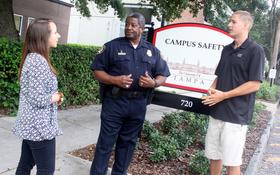Introduction
In 2025, mental health and student wellness have become central pillars of success at community colleges across the United States. As students navigate academic pressures, employment demands, and life transitions, institutions are stepping up to provide more comprehensive support. This article explores how community colleges are leading the way in mental health and student wellness, highlighting programs, trends, and actionable steps for parents, students, and educators.
Why Mental Health and Wellness Matter at Community Colleges
Community colleges serve a broad and diverse student population: first-generation students, working adults, caregivers, veterans, and those juggling multiple responsibilities. Because of their unique mission, these institutions must address not only academic needs, but also mental health and wellness in holistic ways. Some key realities:
Many students attend part-time, work while enrolled, and face financial or caregiving burdens.
Research indicates rising levels of anxiety, depression, and stress in college populations nationwide.
When mental health challenges go unaddressed, they can lead to reduced retention, lower academic performance, and higher dropout rates.
By prioritizing mental health and wellness, community colleges can improve persistence, equity, and completion rates.
Key Features of Leading Programs
Below are hallmarks of strong mental health and student wellness efforts at community colleges:
Multi-modal support: On-campus counseling, tele-health options, peer support groups.
Prevention and early intervention: Workshops on stress management, resilience training, mental-health screenings.
Integration with academic and basic-needs support: Recognizing that food insecurity, housing instability, and mental health are interconnected.
Inclusive, accessible design: Services available to part-time, remote, working students; culturally sensitive approaches.
Data-driven and evidence-based: Using metrics and student feedback to shape program development.
Illustrative Examples from Community Colleges
| College | Program Highlights | Why It Stands Out |
|---|---|---|
| Elgin Community College (Illinois) | Free confidential screenings, telehealth via Doxy.me; support groups; after-hours hotline. (Elgin Community College) | Offers flexible access and recognizes students’ time constraints. |
| Kingsborough Community College (NYC) | Free, confidential services; peer education; workshops integrating mental, physical and social wellness. (kbcc.cuny.edu) | Emphasis on holistic wellness and reducing stigma through outreach. |
| Hagerstown Community College (Maryland) | CARE team, in-person and 24/7 virtual mental-health support, connection to basic-needs packages. (hagerstowncc.edu) | Links mental health with basic-needs resource access for broader student support. |
| California Community Colleges Chancellor’s Office (statewide system) | Launch of a system-wide Health & Wellness program, with peer-to-peer outreach, toolkit deployment, and text-based counseling. (foundationccc.org) | Demonstrates statewide scaling of mental health & wellness efforts. |
These examples illustrate that community colleges are not simply adapting university models—they are tailoring services to their student populations’ particular needs.
Emerging Trends in 2025
Some of the important trends community colleges are embracing this year include:
Tele-health and virtual counseling: As students increasingly study remotely or have off-site schedules, virtual sessions are becoming standard.
Peer support and student ambassadors: Programs train students to act as peer-leaders, helping reduce stigma and link others to help.
Integrated basic-needs support: Recognizing that mental health cannot be separated from housing, food, and financial stress.
Data-driven evaluation: Colleges are using screening tools and outcome data to refine services and allocate resources.
Resilience and wellness education: Workshops on sleep, mindfulness, coping strategies, and self-care are moving from optional to central.
Focus on equity and underserved students: Programs are designed to meet the needs of adult learners, veterans, community college commuters, and historically underserved populations.
Checklist for Parents, Students and Educators
When evaluating a community college’s approach to mental health and student wellness, consider the following checklist:
Does the institution offer free or low-cost counseling or tele-health services for all students?
Are services accessible to part-time, remote, and working students?
Does the college integrate mental health support with basic-needs resources (food pantry, housing support, emergency funds)?
Is there a peer-support program or student-led wellness initiative?
Does the college use screenings and data to track student wellness needs and outcomes?
Are there preventive education and wellness workshops (stress management, resilience, sleep, mindfulness)?
Is there a crisis-response system (24/7 hotline, text support, campus CARE team)?
Are services inclusive of diverse student populations, with culturally competent staff and outreach?
Benefits of Robust Student Wellness Programs
For student success, community colleges that direct resources toward mental health and wellness report multiple benefits:
Increased student retention and completion rates.
Improved academic performance and engagement.
Enhanced student satisfaction and campus climate.
Reduction in crises and emergency interventions.
Better support for vulnerable populations, such as first-generation and adult learners.
Challenges and Considerations
Despite positive momentum, community colleges face several challenges:
Resource constraints: Limited staffing, funding, and physical space can hinder program expansion.
Student engagement: Ensuring working or part-time students access services remains difficult.
Stigma: Many students still hesitate to seek help for mental health issues.
Data and evaluation: Assessing program impact in a two-year college environment can be complex.
Coordination with external providers: Community colleges often rely on external mental-health networks, creating coordination burdens.
Addressing these challenges demands strategic planning, institutional commitment, and collaboration across campus units.
Looking Ahead: Recommendations for 2026 and Beyond
To further advance mental health and student wellness at community colleges, stakeholders should consider the following:
Expand tele-wellness services: Virtual access should be normalized and fully integrated.
Strengthen basic-needs partnerships: Link mental health with food security, housing, and financial supports.
Invest in peer-led wellness: Train students to serve as wellness ambassadors, reducing barriers and stigma.
Utilize data for targeted outreach: Use screening tools and analytics to identify at-risk students and tailor interventions.
Ensure equity-centered design: Programs must address the needs of working learners, adult students, commuters and historically underserved groups.
Embed wellness into the curriculum: Consider required modules on resilience, stress management, and wellness literacy.
Secure sustainable funding: Mental health and wellness must be part of core student-success strategy, not side initiatives.
Conclusion
Community colleges are emerging as leaders in fostering mental health and student wellness in 2025. By offering comprehensive, accessible, and equitable support—ranging from tele-counseling to peer-led programs and integrated basic-needs services—these institutions provide the foundation for student success beyond academics. For parents, students and educators, choosing or supporting a community college that takes student mental health seriously is no longer optional; it is an essential element of the student experience.
As we move into 2026, the expectation is clear: mental health and student wellness must be core components of the student-success agenda at community colleges. Institutions that embrace this will not only support student well-being, but advance equity, retention and completion in meaningful ways.















